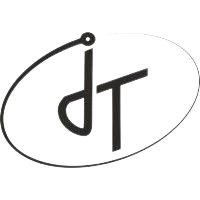TFT Based Instrument Cluster with Sparklet on Renesas RH850
Instrument clusters are the interface with which the system interacts with the driver of a vehicle. Whether it is a four-wheeler or a two-wheeler, the important information about the vehicle such as vehicle speed, engine speed, fuel level, etc are conveyed by the cluster. They help drivers get informed decisions and are as important as any other part of an automobile. Automotive Instrument clusters, just like any electronic device have been evolving a lot. The newest feature is the support for TFT LCDs with attractive graphics. For a requirement for a major Tier 1, Indium Tech developed and demonstrated the Instrument cluster concept with its Sparklet GUI library optimized for Renesas RH850 series.
Originally the instrument clusters were mechanical devices. Called as the Mechanical Instrument Clusters, the devices worked on the principle of converting motion from one mode to another. Typically the engine speed is transferred via cables that drive a cross-coil indicator. Based on the rotation speed, the magnetic rotor moves the pointer, displacement of which indicating a proportionate to the actual speed. Then with the advent of electronics, electromechanical clusters came into existence. The engine/vehicle speed was transferred via rotary encoders which generates a series of pulses based on the speed. The pulses are counted with digital counters and stepper motor drives are used to drive the pointers.
These electro-mechanical devices are still the most predominant segment in the Instrument cluster market. Generally providing the minimum information of Engine speed (tachometer), vehicle speed (speedometer), fuel gauge, and oil temperature, they also had tell-tale lights for events such as engine temperature, battery level, brake, etc. They provide a high level of reliability and are easy to design conforming to functional safety requirements. While the instrument clusters evolved, the other electronics in the car also underwent drastic changes. The Engine Control Units (ECUs) became the de-facto controller of the engine and a lot more controllers popped up across the vehicle each controlling an aspect of the automobile such as the lights, mirrors, seats, infotainment system, airbags, etc. The count of such units – communicating via a bus such a CAN, crossed even a hundred in some vehicles. More the controllers, the amount of information available to the driver also increased manifold. The electro-mechanical clusters had a fixed arrangement and are not scalable. OEMs looked for a better management of space and new technologies for the IC.
The hardware designed had multiple LCD options including 5” and 7” LCDs with support for 18-bit and 24-bit interfaces. A CAN transceiver is available to communicate and collect information from the ECUs. An external Bluetooth module connected over UART offers connectivity to the smartphone that can be used to intimate incoming calls, pick/reject them, message and other notifications, etc. Another unique feature with the design is to support navigation map over Bluetooth. Indium Tech’s instrument cluster demo for 2 wheelers included various features such as intuitive display of vehicle information, customizable display, smooth animation for changes between screens etc. All the UI designs were done with Adobe Photoshop and imported via Flint IDE, the ideal tool for HMI development for Sparklet. The combination proved to be very effective in helping to complete the activity within weeks.
